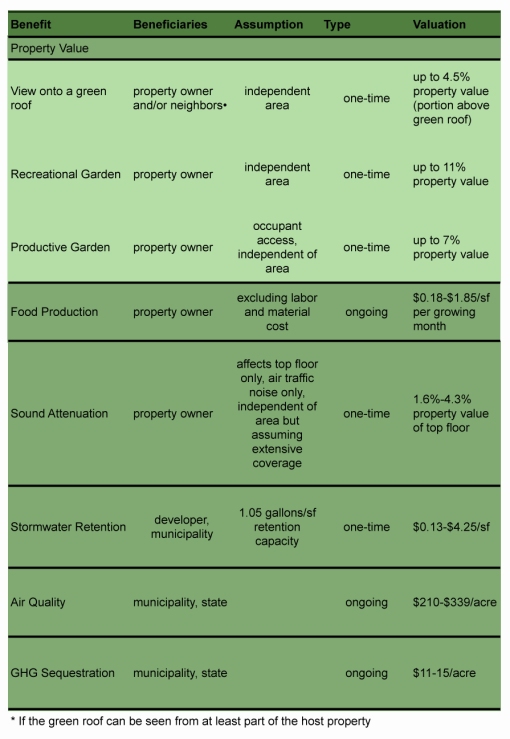Steven Peck, Hon. ASLA, and Founder and President of Green Roofs for Healthy Cities was recently interviewed by The DIRT while in Washington D.C. for the Living Architecture Symposium, (“Despite the Economy, Green Roofs Bloom“). In the interview, Mr. Peck quoted a recent survey of the green roof industry which reported that 8-9 million square feet of green roofs were built last year. This figure represented a 30% increase in market growth. Most of this expansion was focused in cities that have public policies in place that encourage and support green roof installation. The most intriguing statements in the article are those that helped quantify the economic impact of green roofs.
The post included some assertions that quantified the financial value of some of the soft benefits of green roofs. These included
“…average stormwater mitigation benefit is $4.26/sf” and a view of a green roof improves property values of nearby buildings by 11%”
These figures are based on research by Smart Cities Research Services, Montreal. “The Monetary Value of the Soft Benefits of Green Roofs” report prepared by Ray Tomalty, Ph.D. and Bartek Komorowski, MUP with the assistance of Dany Doiron, published last year. The report includes research on developing heuristic methods for quantifying seven soft benefits of green roofs: including: change in property values, marketing benefits, food production and food security, sound attenuation, stormwater retention, air quality, and green house gas (GHG) sequestration. The following is a summary of their findings:
I did not include the marketing figures in the table above, due the complexity of their findings.
Since there is little to no research specific to green roofs, the heuristic methods described in the report rely on other related research. Examples include:
- Tree planting along a street in front of a property increase the property’s value by up to 9% Source: Determinants of Neighborhood Transformations in Philadelphia-Identification and Analysis: The New Kensington Pilot Study (2004) prepared by The Wharton School at the University of Pennsylvania.
- Homes adjacent to public parks have about a 20% higher property value than similar homes distant from parks, Source: The Impact of Parks on Property Values: Empirical Evidence from the Past two Decades in the United States (2005) by J. Crompton.
- Average properties abutting typical community gardens increased in value by 7.4% within five years. Source : The Effects of Community Gardens on Neighboring Property Values (2008) by Voicu, I. & Been.
Supply and demand play a critical role in determining one values and this is not any different for green infrastructure. For urban areas that may incorporate little to no green infrastructure (i.e. parks, green roofs, street trees) and are predominantly unsightly parking lots and roofs, projects that include green roofs should be more valuable and those properties surrounding it should benefit in some way as well. The report provides a great starting point for financially quantifying the soft benefits of green roofs. Over time, data specific to green roofs will eventually become available and we will be able to more accurately quantify their specific benefits.
-Brian Phelps



You must be logged in to post a comment.